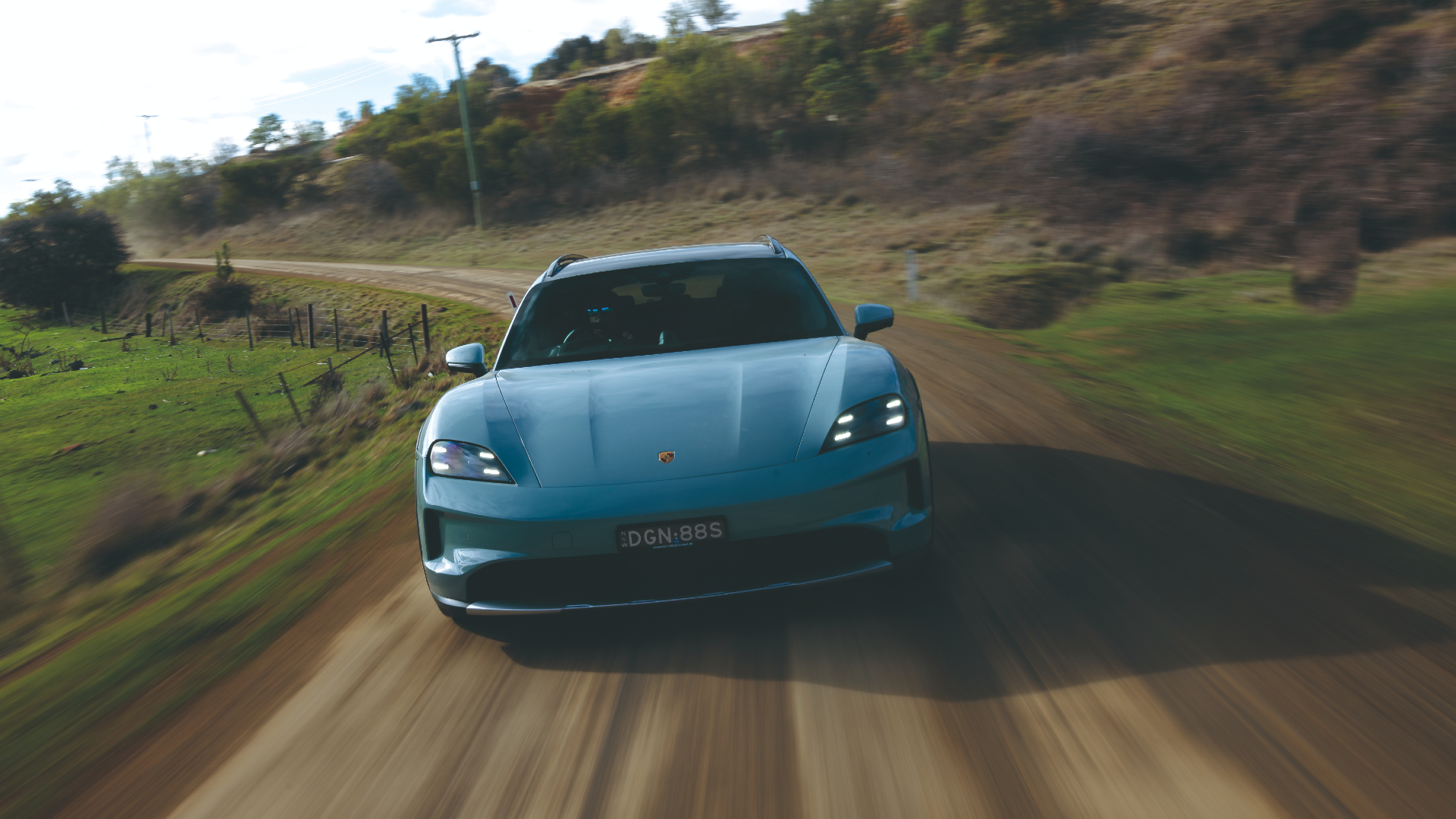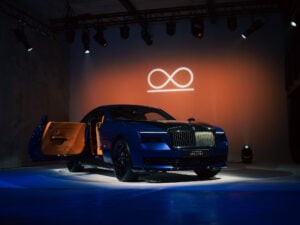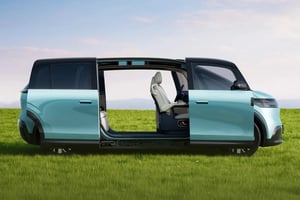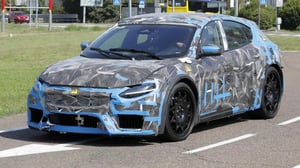Editor’s Note: This story originally appeared in Volume II of B.H. Magazine. For access to future issues, subscribe here.
Noah Lyles snatched gold at the Paris Olympics by just five-thousandths of a second for a personal best of 9.79 seconds – a tenth of a second slower than Usain Bolt’s 9.63 Olympic record. To give you an idea of how close the competition is in the men’s 100m competition, it has taken almost half a century to carve less than half a second off the world 100m benchmark.
Imagine if an athlete shaved a couple of seconds off Bolt’s 100-metre record, which has stood since 2012 – it would likely be the greatest sporting achievement of all time. Fortunately for EV fans, progress in the electric car space is comparatively exponential, where only technology can outpace the Lightning Bolt.
The original Porsche Taycan was already quick, able to blast to 100km/h in 2.8 seconds utilising a hefty 560kW, but the new iteration of the same Turbo S variant ($374,200 plus on-road costs) makes up to 700kW. And there’s a new Taycan range-topper – the Turbo GT – thumping out 815kW when so-called Attack mode is engaged.
RELATED: DRIVEN — Our First Taste Of The All-Electric 2025 Porsche Macan
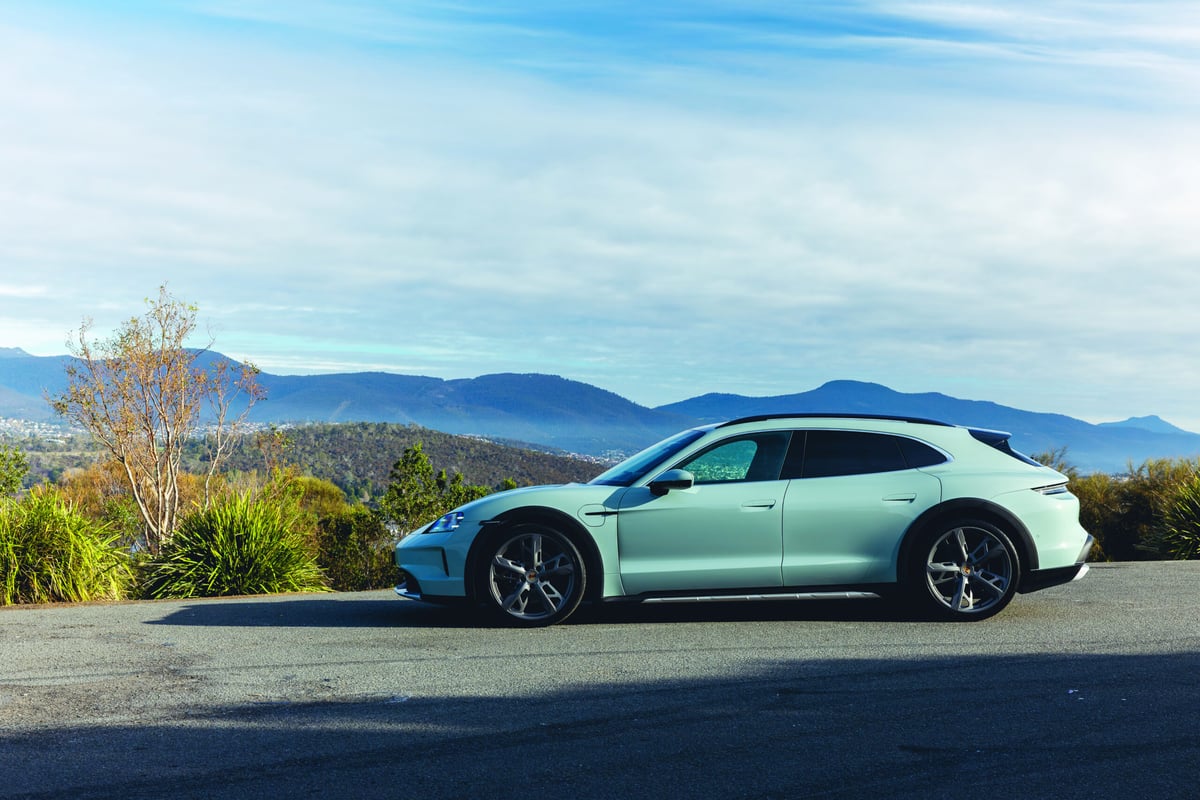
For $416,600 plus on-road costs, you get more power than your average F1 car – and by far the most powerful car ever unleashed on Aussie roads. Ferrari V12? Forget it. McLaren V8? Not even close. It even out-muscles the Mercedes-AMG One, which uses a Formula 1 engine matched to an electric motor.
Yep, the Taycan trounces them all and does it with two electric motors that don’t have the complex assortment of valves, pistons, camshafts, and associated software to make sure everything happens at precisely the right time. It’s indicative of the advances happening in the electric car era. Technology is moving rapidly and gains have been relatively easily won compared with that of the ICE world.
Needless to say, the new Taycan is a weapon on the road. While we’re yet to experience that Turbo GT, we’ve done plenty of kilometres in the regular Turbo, a model that thumps out a stupendous 650kW. Prod the throttle and you’d be forgiven for thinking the earth’s gravitational pull had just been given a cosmic-sized jolt.
Responses are scarily instant and there’s a ferocity that few cars come close to. Yet the Taycan can be tame and comfortable, riding on air suspension that beautifully smothers bumps. If there’s one criticism, it’s in the execution, which is more clinical than seductive.

Porsches are supposed to be quick and they’ve long had an uncanny way of tickling the high-octane senses to make the driver feel special. Yet we tend to think the sheer exhilaration of the Taycan’s acceleration will overrule that minor oversight for many.
Elsewhere, too, it’s oozing Porsche goodness. Steering is wonderfully fluid and loaded with feedback. Grip levels are stupendous, cementing the Taycan as an accomplished sports car with back seat practicality (it’s even available as a distinctively styled Cross Turismo with more back seat headroom).
Perhaps the most astonishing thing given the go-fast gains is that acceleration and pace was not the biggest focus when developing the new Taycan. Instead, it was making the excitement last for longer. A bigger battery and improvements to aerodynamics and efficiency have eked about 35% more range between charges, with upwards of 600km now on offer.
And when it comes time to plugging in, the Taycan is also ludicrously fast, able to accept up to 320kW of DC power through its 800-Volt electrical architecture. It means the 105kWh battery (97kWh of which is useable) can be charged from 10-80% in as little as 18 minutes.
RELATED: This Porsche 934 Sculpture Just Sold For More Than An Actual Porsche

The Taycan is not shy on luxury, either. A curved 16.8-inch instrument cluster dominates the view for the driver and brings touchscreen smarts on its outer edges to allow quick adjustment to suspension and lights. A 10.9-inch infotainment screen packs plenty in and combines with quality materials and intense attention to detail for a suitably upmarket cabin. The same steering wheel used in the 911 – the heartbeat of the Porsche brand – reinforces the intentions of the Taycan.
There’s the occasional misstep, such as having to delve into the infotainment screen to adjust the direction of the airflow. None of which is enough to deter from the EV brilliance on display elsewhere.
The real surprise in the Taycan line-up, though, is the lesser models, which still get the brilliant dynamic talent of the range heroes.
The Tacyan 4S ($216,300), for example, will outblast many supercars using its 440kW and 710Nm to get to 100km/h in 3.7 seconds. It’s a tantalising proposition that speaks to the depth of the Taycan line-up.
All of which has us salivating over what the future has in store for electric performance. Just in case we’re craving even more.

If you’ve enjoyed this feature story, consider a few of our other favourites from the pages of B.H. Magazine:
